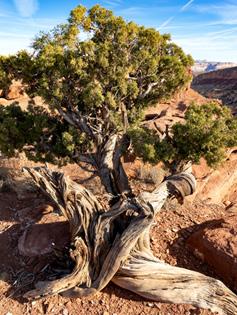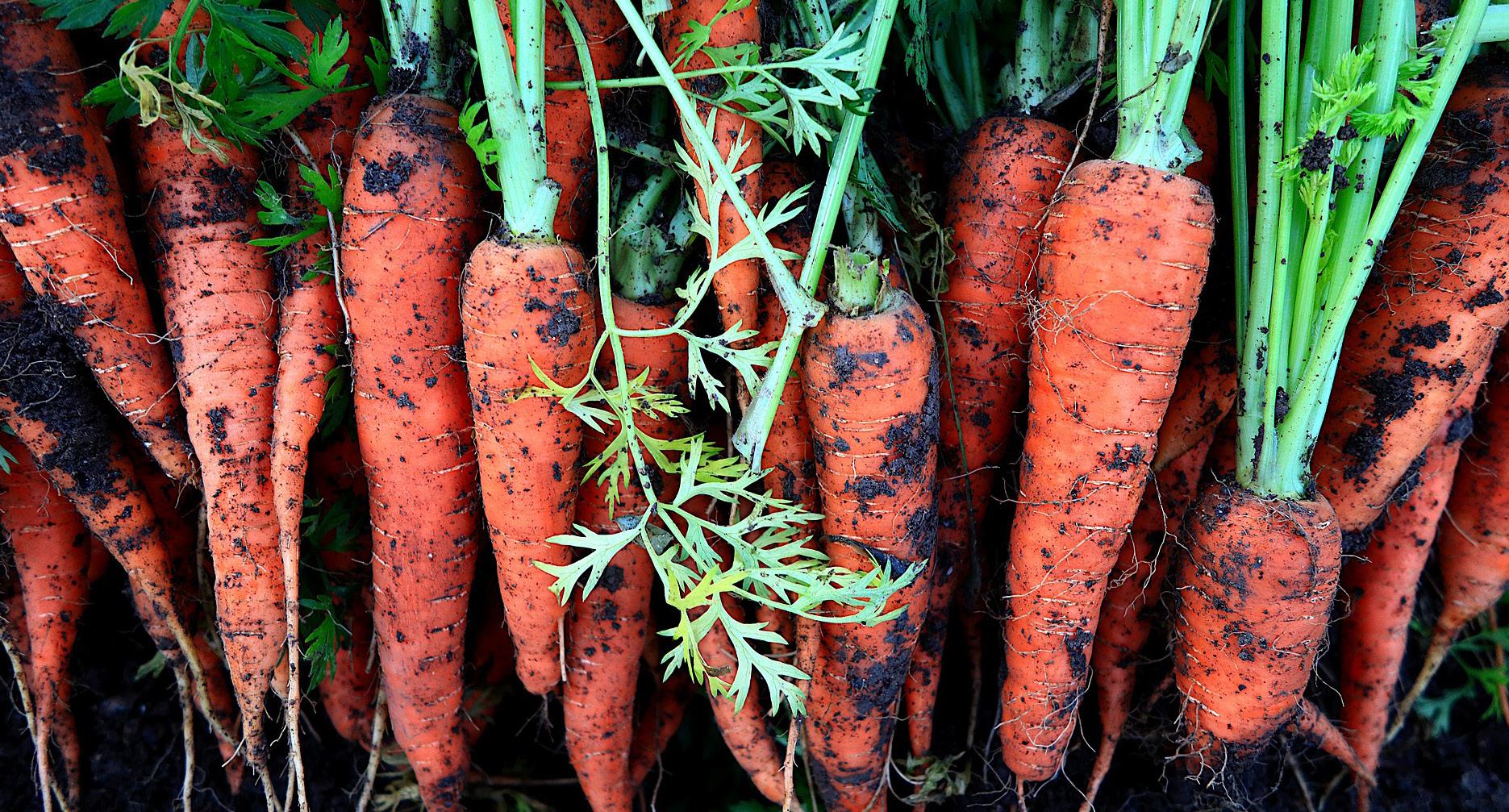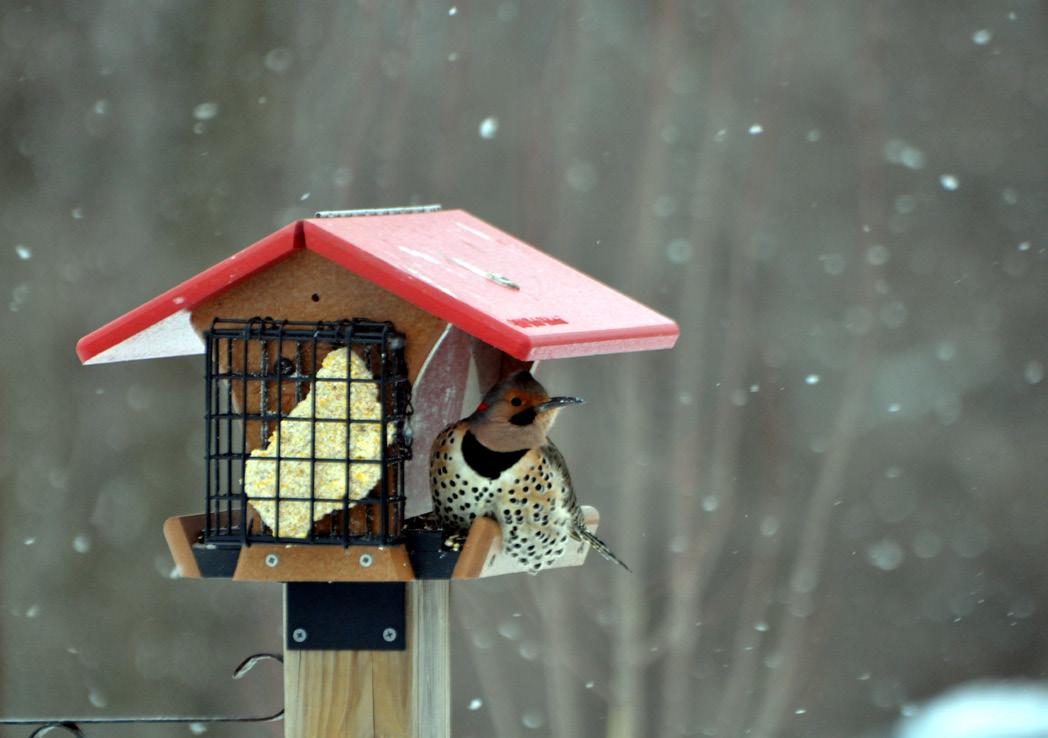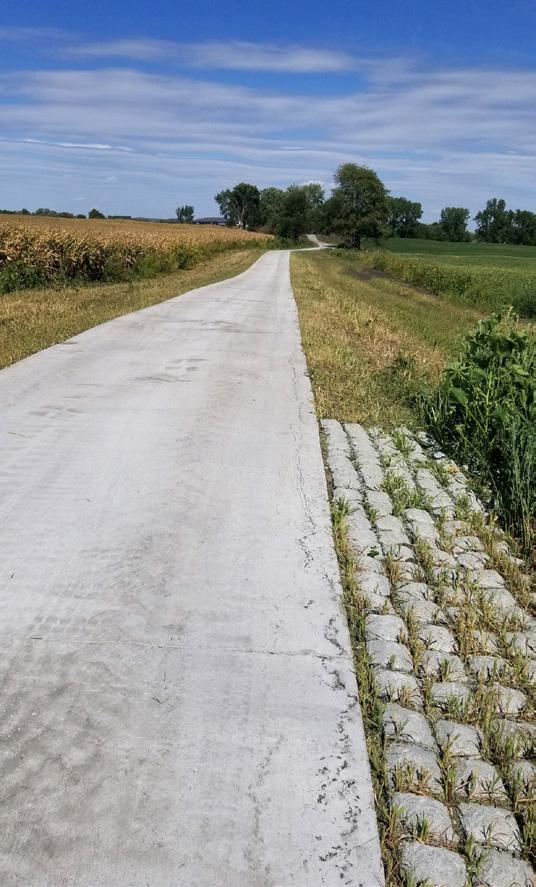
3 minute read
Nature’s Resiliency
What Nature Can Teach Us About Resiliency
Paige Henggeler, Outreach Assistant In my front yard stands a 100-year old oak. It’s close to the end of its lifespan, and over the last year, it has lost two big branches during storms that required a chainsaw to cut up. After the derecho, my first phone call was to my fiancé, Josh, asking him to check on that big old tree. I visualized the whole thing torn from the ground, lying through the middle of my house. To our great fortune and shock, it lost minimal branches during the storm. If that tree could talk, it would have said something like, “Little girl, I have seen a lot of life, and at this moment, I’m not going to let a little wind knock me out. I have endured hard winters and droughts. I have seen men go away for two world wars and come back. I have watched as this whole neighborhood was built and little children were born and grew up. I’m not going to let a little wind knock me out. Not today. Not today.” I have always been in awe of the surprising resiliency of the natural world. It’s time to start taking notes because nature has many lessons to teach us on how to respond in moments of crisis.
Advertisement
It’s hard to wrap our minds around how things can return to normal after a bad storm or a pandemic. Yet when we look outside, the birds are still singing in half broken trees. Nature has learned a valuable lesson that humans are still trying to figure out: “In ecology, resilience is defined as the capacity of an ecosystem to respond to a disturbance by resisting damage and recovering One of the best visual examples of quickly” (Folke, et. all 2004). Through flood, fire, drought, human resilience in nature is my favorite tree, disturbance, or windstorm, wildlife must adapt or die. Some systems the Utah Juniper (Juniperus osteosperma). are particularly designed in a way to thrive after a disaster. Look at the It’s a gnarly looking conifer native to the prairie: as a fire races across the plain, small mammals flee to their safe southwestern United States. It’s baked underground burrows. In the aftermath, the prairie flourishes. Invasive by the desert sun, its crown is a mixture species and trees are burned to a crisp and the native grasses, which have of dead and live branches due to selfroots that reach deep and are specially adapted for fire, once again have pruning when resources are limited, dominion. and it takes root in stone, drawing water from a deep internal spring. It What can we learn about resilience from the natural word? To have wears the scars given to it by the harsh psychological resilience means to cope with mental and emotional desert environment proudly. There is stressors or to return to pre-crisis status quickly. Nature teaches us that in something profoundly mystical about order to survive, we must adapt. Mentally, we must cope with our ever- the appearance of this tree: worn and changing world in order to protect ourselves from negative stressors. Like weathered yet still reaching further into the big oak, we have a choice to stand tall through the storms of life. Like rock searching for new sources of life-the prairie grasses, our roots (family, friends, belief systems, communities) giving water. Beaten yet still growing, help us to weather the fires of life and flourish in the aftermath. Many still surviving.of us saw this year how easily the unneeded excess of our lives can be cut out. Those “invasive species” that bog us down and drain the life out of us aren’t truly needed for a happy life. Finally, like the juniper we can wear the scars of a hard life proudly; our experiences mark us as survivors. That grit that has always been part of the shared American identity is still Drawing water from stone: this juniper grew there. We can have self-compassion because, when we have been through out of just a few something like the past year, it’s going to leave a mark, but it doesn’t fractures in the mean we have been beaten. While we don’t know what 2021 is going to surface rock. bring, we know we made it through this past year, and we humans have that unshakable resilience too. Photo by Jim Witkowski






